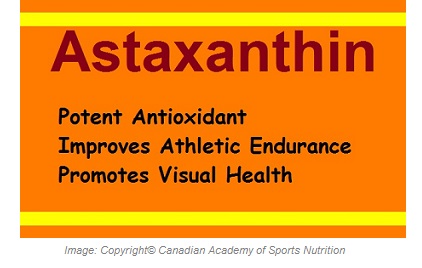Astaxanthin is a carotenoid that gives the reddish pigment to salmon, crab,  krill, and lobster. Unlike many other carotenoids, astaxanthin cannot be converted into retinol (pro-vitamin A) in the body.
krill, and lobster. Unlike many other carotenoids, astaxanthin cannot be converted into retinol (pro-vitamin A) in the body.
Being used as a food coloring as well, astaxanthin is a potent antioxidant and is about 75 times stronger than alpha – lipoic acid (ALA). In terms of antioxidant activity, it is also stronger than vitamin E, vitamin C, Co – Enzyme Q10, and beta – carotene.
Benefits of Astaxanthin:
Astaxanthin demonstrates many benefits:
- Antioxidant activity.
- Cardiovascular benefits.
- Visual benefits.
- Protective activity against diabetic nephropathy (kidney damage caused by diabetes).
- Neurologic benefits.
- Athletic benefits (see “Sports – Performance Enhancers”).
Astaxanthin improves cardiovascular health by reducing triglyceride, increasing HDL, and improving blood flow to and from the heart. It may also help maintain normal blood pressure.
Astaxanthin prevents oxidative stress in the eye and helps reduce the occurrence of occasional eye fatigue especially when using visual electronics (computer eye strain syndrome). It also has a role in regulating blood flow to the eyes.
It may help protect from neurodegenerative diseases such as Alzheimer’s disease, multiple sclerosis (MS), amyotrophic lateral sclerosis (ALS) and many others by preventing oxidative stress in the nerves and nervous system. For more information about Alzheimer`s disease and multiple sclerosis, see “Medicinal Nutrition“.
Athletic Benefits:
See “Astaxanthin” under the section of “Sports-Performance Enhancers”.
Dosage:
For cardiovascular, visual and neurologic benefits, it is taken 5 – 10 mg a day. Athletes may need higher doses. For better absorption, it is better taken along with a meal.

